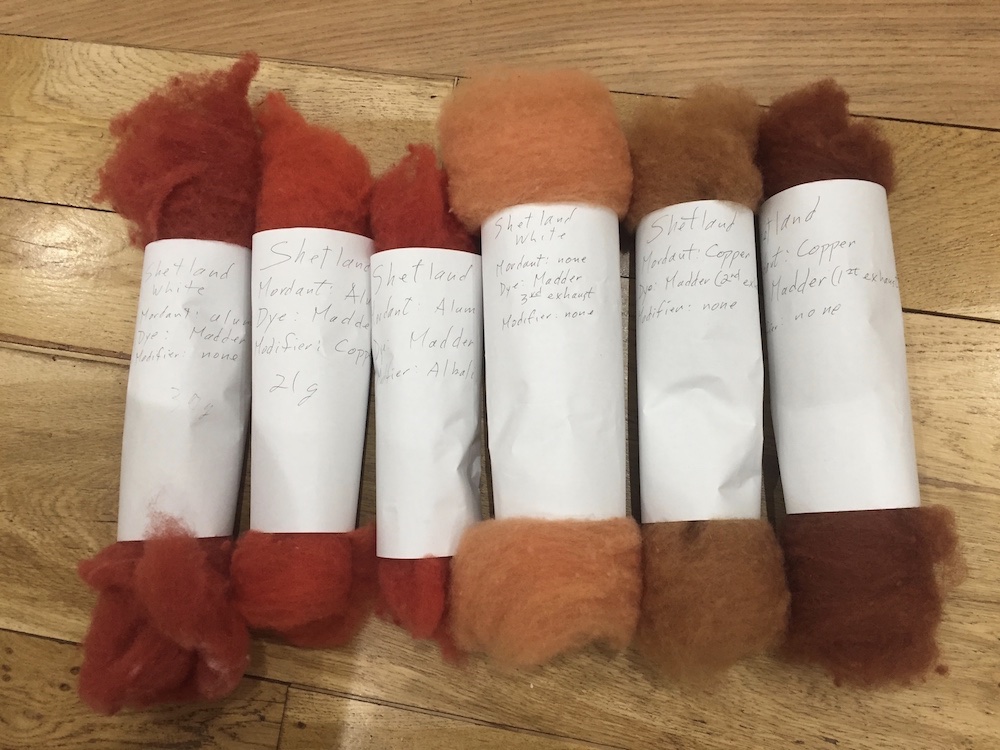Linda Moss: Handweaver
We grow our own dyestuffs, and don’t buy in ready-made dried roots and leaves. This means we produce colours that are truly native to the Peak District and have been in use here for thousands of years. These include Woad (soft blue), Madder (strong reds) Weld (bright yellow) Marigolds (olive greens) and coreopsis (which admittedly, was originally native to North America but it makes a lovely range of copper to bronze colours!).
We also pick dandelion flowers and carrot leaves (soft yellows and green) Many other plants provide subdued pinks/beige/ yellows. We avoid lichens, although there are plenty growing in the clean mountain air, as they are do not quickly regenerate, although they were extensively used in ancient times. Used in combination, these plants offer a huge range of colours.
Colours are further determined by treatments before and after dyeing. The range of colours shown in the photo below, for example, shows a range of colours obtained from a single dyebath using madder roots. However, the outcome is always unpredictable and each dye lot will produce slightly different results.

|

|
The outcome is always unpredictable and each dye lot will produce slightly different results. This means my colours vary within the woven piece, giving a unique character to the finished textile. Vegetable dyeing is not simply a matter of submerging the yarn into the dye bath, as you would do with a pack of chemical dye. The leaves, flowers or bark have to be cleaned, shredded or chopped, then simmered to extract the dye. The yarn can be “mordanted”, that is, treated to make it receptive to the dyes and different mordants produce different shades or even colours. The yarn must be submerged in the dye bath and kept at a constant temperature (which varies with the dye plant), for a certain length of time (which also varies), otherwise the colour will change. It can then be “modified” with an acid or alkaline or metal-based solution to produce yet more shifts of colour. All this is quite an art, and we learn by experience.
There is also a seasonal rhythm to vegetable dyeing if you use your own fresh plants. For instance, Woad is available only in the summer, when it is prolific, and its intensity is strengthened by bright sunlight, so a hot summer’s day is the best time to dye blue. Dandelion flowers are available only in spring, and taking bark is advisable only in late autumn. Madder roots are to be dug in winter. when the plant has died down. So I have to make sure I have enough of each colour to last over the year… this doesn’t always work out so sometimes my colour choices are dictated by the seasons! I see this as yet another connection with the land that provides so many of my materials.